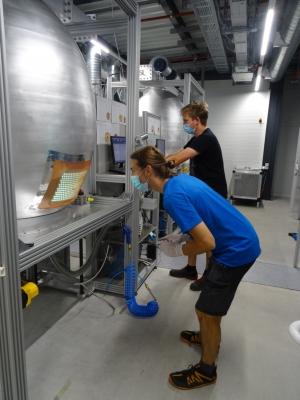Diamond windows in production in Europe
Synthetic diamond windows will play a double function in the ITER machine—allowing the microwaves of the electron cyclotron heating system to pass through to reach the plasma while providing an effective leak-proof vacuum barrier. A contractor to the European Domestic Agency has started production.
Offering unsurpassed hardness, broad band optical transparency, and extremely high thermal conductivity, synthetic diamonds are the material of choice for 60 small windows that offer access to the machine for the high-frequency electromagnetic waves of ITER's electron cyclotron heating system, yet ensure a tight vacuum boundary.
The European Domestic Agency Fusion for Energy is working with a German contrator, Diamond Materials, for the production of sixty 1.1 mm thick discs with a diameter of 7 cm. Each one requires approximately six months to complete, including tests. The company is currently working at a rate of 7 to 10 discs every four months.
First the sythetic diamonds are "baked" in one of the company's 40 furnaces, a process that requires two months. Then the diamond is separated from its substrate, shaped to ITER specifications, and polished before its quality gets confirmed through optical testing.
See the full article on the Fusion for Energy website.


